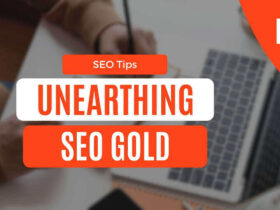On-page SEO is the backbone for the success of Off Page SEO strategies. In part 1 of on-page seo checklist we discussed the 7 important to-dos to improve on-page SEO. It’s time to look at the other 8 on-page seo strategies.
15 To dos for On Page SEO
8) SEO Friendly URLs-
The website URL structure needs to be perfect for maximum SEO benefit. It is often neglected by the most crucial part of on-page SEO.
Permanent links – A permalink or permanent link is the unique URL that you assign to your webpage. The name itself suggests that they are supposed to be permanent links therefore it is not advisable to change URLs once the page is indexed in the google and is already on top positions. Changing the URL of the webpage will not only affect the present ranking but also you will lose the inbound links associated to that webpage. If the URL is recently created and not indexed yet, it’s okay to change the URLs.
The ideal URL should be short, focused and contain the target keywords in them. The Urls should use dashes ‘-‘ instead of underscores ‘_‘ to separate the different parts. Avoid using stop words in URLs like ‘the’, ‘but’ ‘of’ etc. They add no value to the URL. Capitalization in URLs should be avoided as well.
SEO friendly URLs for a company website or ecommerce store-
Include category names in the URL. It makes it easy for both search engines and users to understand the webpage. A good URL for ecommerce store is-
https://www.example.com/category /product-name/
SEO friendly URLs for a blog, news or magazine website-
For Blogs it is best to include only the post title in URL with target keywords.
https://www.example.com/post-title/
For online magazines and blogs with multiple topics, it is best to add the topic in the URL.
https://www.example.com/topic/article-title/
For daily news websites it is important to add date of the published article. The SEO friendly URL in this case can be-
https://www.example.com/news-category/yyyy/mm/dd/news-title/
An HTML sitemap containing all important links to website in the footer menu (can be on header as well) also known as User Sitemap represents your website structure. An updated sitemap makes navigating your website easier for search engines and users. If you have an ecommerce website you can also include manufacture sitemap, brand sitemap or category sitemap in your footer.
9) Microdata/Structured Data-
Google along with Yandex, Bing and Yahoo support a set of schemas or schema vocabulary (available at Schema.org) which is a type of microdata that makes it easier for search engines to understand and interpret the content on your website more efficiently so they can serve best search results to users based on their search queries. According to Google schema microdata is not a ranking signal but since it enhances the rich snippets (displayed beneath the page title) which in return increase CTR (click through rate) by providing relevant information to users in a prominent and visually appealing way.
You can check your schema markup here.
10) Keyword Rich Unique Content-
Content is the king. It has to be unique, informative and engaging. Avoid copy pasting. Duplicate content will kill your SEO efforts faster than anything else. The main motivation of people to visit and engage with your website is to find the information they are looking for which is not available anywhere else.
Search engines like Google place a very high value on the content present at your website. It should be informative, original, easy to read and contain right keywords. Make sure to use proper fonts and font size for effective user readability.
What is considered as good content for SEO?
1) The content should be ideally between 1500 to 2000 words or atleast minimum of 800 words for best SEO results.
2) The content should not have been published anywhere else. It has to be original. If you are writing content for ecommerce website avoiding copy pasting manufacturer product descriptions. If you have multiple websites and want to use the same content owned by you on another website, place a rel-canonical tag on the duplicate content pointing it at original source.
3) Content can be anything from text, infographics, and videos to images. Make sure the text to code ratio is at minimum 10% (for ecommerce websites) and ideally 20% or more for content based website. Avoid using bulky images and videos. It is good practice to include text description with images and text transcripts for videos to balance text to code ratio.
4) It is crucial to post fresh content on the website frequently. Formulate a publishing strategy to maintain the frequency of fresh content on your website.
5) Include relevant keywords in the content. Google algorithms are well developed to understand the synonyms and intent of the keywords. Do not stuff the keywords in the content. If your keyword stuffed content reads unnatural to human eyes it will look unnatural google as well. There is no optimum keyword density. It can be anything between 2 to 5%. You can target focus keywords, long tail version of focus keywords and include their synonyms to make the content SEO friendly. Focus on content that is usable and solve the problems of website visitors. Write the content keeping the user experience in mind. Search engines will automatically reward you with top ranking for writing helpful content for users.
11) Internal Links-
Create as many relevant internal linking as possible to pass on the SEO juice from one webpage to another. When google crawls the website it tends to follow internal links on webpages and crawl all the content interlinked with each other. It helps search engines quickly know about the presence of other webpages as well. This helps the undiscovered webpages get indexed in google search results. It is also a good idea for blog writers to create a corner stone article and link all other relevant articles to the main article. You can tell search engines about your most important page (eg. corner stone article) by sending more internal links towards it.
The other benefit of internal linking is that it increases the number of page visits and time each user spends on your website which sends positive SEO signals to search engines. The user reading in an article on your website might find it useful to read the interlinked related article.
As a caution do not include a lot of internal links in the content. An unusual number of hyperlinks might look spammy to both users and search engines.
12) Image Optimization-
A picture is worth a thousand words. Choose the images for your website carefully. They should represent your brand well. Best practices for using SEO friendly images:
1) Use original images or buy their usage rights. Even if the image is listed free for reuse, you might have to credit the source to avoid any future copyright issue.
2) Always compress the image before uploading. Banner sizes image of 1200*500 pixels should not exceed 150 KB. Lighter images lead to faster the loading speed.
3) ALT tag is still important for images. Make sure to describe the image properly using Alt tag.
4) The filenames for images needs to be descriptive. Don’t name your image as ‘article2.jpg’ or ‘product34.jpg’. Instead use filenames like ’15-seo-tips.jpg’ or ‘apple-i-phone.jpg’
5) For ecommerce websites and news blog with lots of images on single page it is best to Use CDN (Content Delivery Network). CDN service stores a cached version of the images on a number of hosts and server which speeds up the loading time of images and the webpage load faster.
13) Social Sharing Buttons-
Install social sharing button on all your webpages. Make sure your content is easily sharable. Social media signal is important factor in Google’s ranking algorithm. The more your webpage is shared across major social networking platforms the better it will rank on google. Choose the placement and color scheme of social media buttons so that they are easily visible. You can also display the number of share/like/follow count alongside the social sharing buttons. Ecommerce websites can incentive social media sharing by providing discount coupons to customers for sharing the product page. If your website requires creation of account or login make sure to provide social media login option.
14) Reviews/Testimonials/Case Studies-
Reviews and testimonials by customers and clients not only provide credibility to your business but also enhance the search appearance in SERPs. Google loves user generated content. Make it easy for customers to leave reviews on your product/service pages. Display the reviews or testimonials on your webpages prominently. Create a dedicated review/testimonial page and link it to google reviews, facebook reviews or any other 3rd party review site where your business has positive reviews for prospective customers to see. Case studies give you an opportunity to showcase problem solving skills of your company. They can also be used to achieve a backlink by your clients.
15) Comment/Discussion section-
Google gives importance to user generated content while determining website rank in search results. Choose the best comment/discussion plugin to ensure effective user engagement on your website. Disqus and Facebook comment plugin can be the possible options depending on nature of your website. Facebook comment plugin is better suited for news and magazine blog websites.

Hunaid Germanwala is a digital marketer and content creator at Health Products For You since 2014. He has an MS from Ulm University in Germany. His mind is always buzzing with creative ideas and is eager to explore new perspectives. His motto in life is “Better to Light the Candle than to Curse the Darkness.”













Leave a Reply